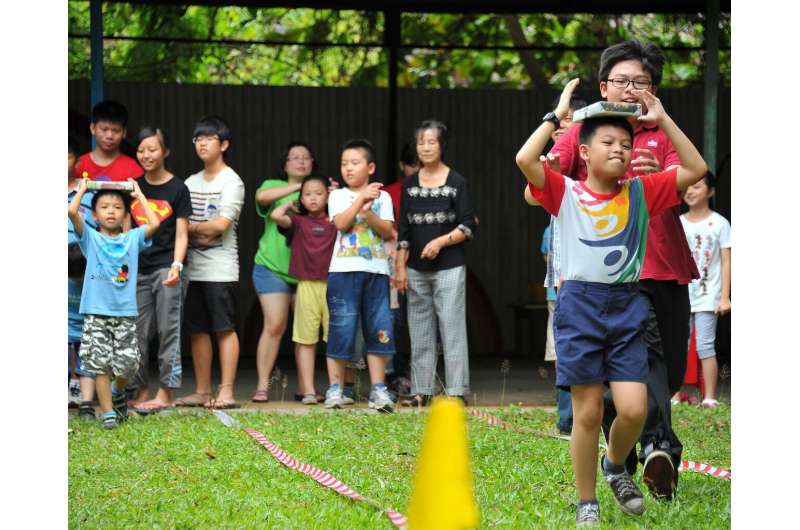Credit: Unsplash/CC0 Public Domain
The Centers for Disease Control and Prevention (CDC) has released guidelines to reduce the risk of COVID-19 infection at youth summer camp. But what do those guidelines mean for families and children who look forward to the ritual of attending overnight or day summer camp?
"There not one strategy that's going to completely eliminate risk. But using multiple strategies can reduce the risk for everyone who's attending," says Dr. Nipunie Rajapakse, a pediatric infectious diseases physician.
Some of the strategies include trying to limit the size of the camp as much as possible so that it's a smaller group of children—maybe with one camp counselor or supervisor rather than having large groups of children mixing.
"Testing prior to attending camp one to three days before camp starts is another strategy that can help reduce the risk of someone coming to the camp who's infected and going on to transmit to others," says Dr. Rajapakse. "And, certainly, if anyone is feeling ill or having symptoms in any way, they should not be attending."
Masking
"The great thing about summer camps is that most of the activities have been outdoors. And we know that outdoors presents much lower risk of transmission. For indoor settings, masking is encouraged, as well as adhering to the physical distancing recommendations to further reduce the risk of transmission," Dr. Rajapakse says.
High-risk activities
"Certain activities in camps can pose more high-risks. Those include eating meals together. These are especially times where people really need to adhere to the physical distancing recommendations since you can't be masked, obviously, while you're eating. Additional kind of supervision and education for kids around those times is going to be important. And keeping most activities to the outdoors as much as possible is also one of the other recommended strategies."
Considerations
Dr. Rajapakse says each situation for a family and child will be unique. Taking stock of who is in your family and who is at high risk for illness is an important consideration. "If you have a healthy child who doesn't have any known risk factors for more severe illness, then, certainly, that might be a lower-risk situation to send your child to camp. Whereas if you have a child who has underlying health conditions, who may be at a higher risk for illness, if they were to get infected, it might not be the best situation to send them into a camp type or group-type setting."
Gather information about the camp's safety protocols and how they plan to ensure a safe experience for your child.
"It's also important to understand what the camp is doing, what precautions they are putting in place, what guidance your local public health organizations have given them and how closely they're (the camp) planning to follow those instructions. (This information) can help you feel a bit more comfortable, as well, in making a decision," explains Dr. Rajapakse.
"We know that some kids have really struggled this past year with mental health issues, feelings of isolation, anxiety, depression and, certainly, for them, being able to return to an activity like going to a summer camp ― if that's something that they really enjoyed in the past ― may make a big difference to their well-being over the summer," says Dr. Rajapakse.
©2021 Mayo Clinic News Network
Distributed by Tribune Content Agency, LLC
























